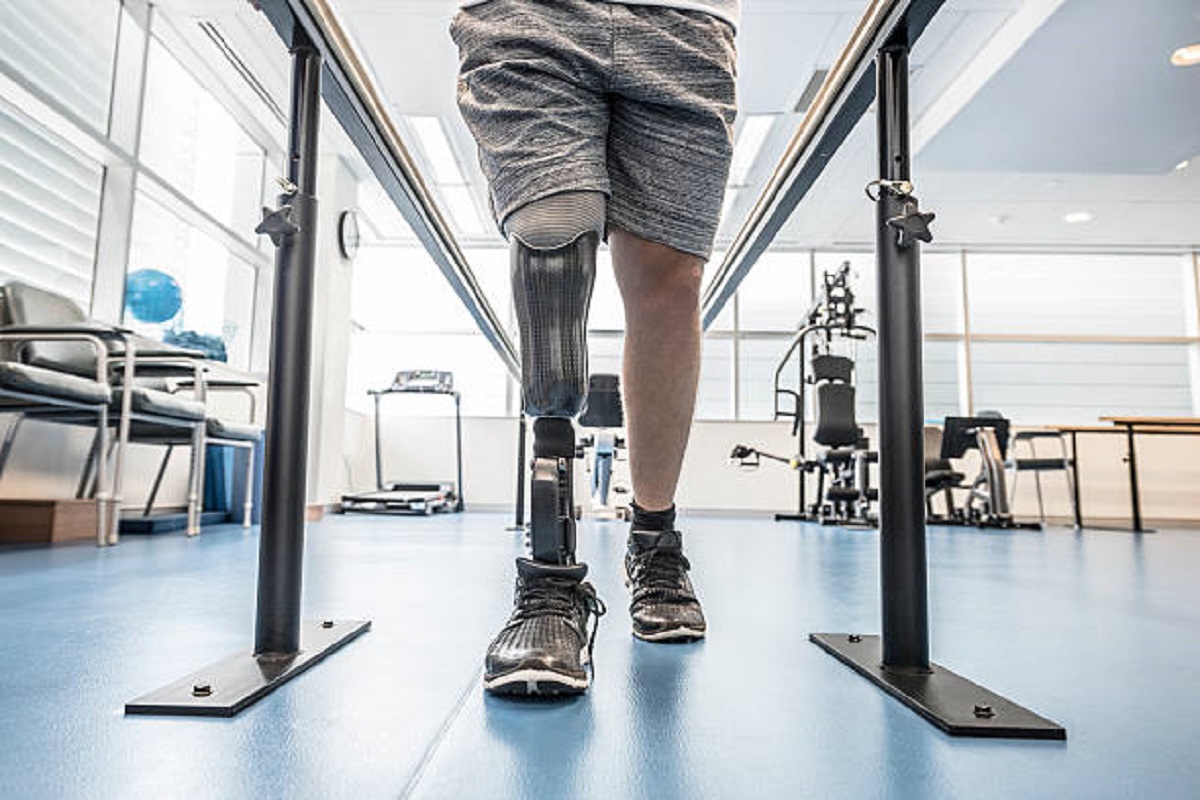Impossible looking task of deep squatting and cross-legged sitting is achievable now with the new prosthetic leg technique developed by the researchers of Indian Institute of technology, Guwahati.
New Prosthetic Leg technique is specifically custom designed for Indian requirements like Indian toilet seat, uneven terrain which also supports the cross-legged sitting, and deep squatting. The new technique is also adjustable for the different age groups and multiple stages of prosthesis use.
Advertisement
The research was funded by the Ministry of Education, Government of India and the Department of Biotechnology, Government of India.
Highlighting the key areas of their research, Prof. S. Kanagaraj, Department of Mechanical Engineering, IIT Guwahati, said, “The knee joint developed by our team has a spring assisted deep squat mechanism, which helps to use Indian toilet system more comfortably; the knee rotating mechanism helps to have cross legged sitting; the locking mechanism helps to reduce the fear of falling of patients while walking in an unknown terrain; adjustable link length in a knee helps to have either more stability or easy flexing depending on age and requirement of the patients. Overall, the knee joint is designed to meet the Indian life style which other products fail to fulfil”.
IIT Guwahati Researchers collaborated with 151 Army Base Hospital, Guwahati, Tolaram Bafna Kamrup District Civil Hospital, Guwahati, Guwahati Neurological Research Centre (GNRC), North Guwahati, and North Eastern Indira Gandhi Regional Institute of Health and Medical Sciences (NEIGHRIMS), Shillong.
Prosthesis development in India faces many challenges. Highly functional mobility for amputees requires devices with advanced features which are expensive and cannot be afforded by many.
Further, affordable prosthetics that are available in the market have many functional limitations.
In addition, the Indian lifestyle and uneven terrain require prosthetics with specifications unique to India, which are not widely available in the market.
A team led by Prof. S. Kanagaraj, Department of Mechanical Engineering, IIT Guwahati, set out to tackle these issues. Prototypes of their models developed by this research team are currently undergoing trials.
The unique aspects of this solution compared with peers in the field
- 4-bar injection mouldable polycentric knee joint with a locking mechanism
- Avoids arrest of motion while standing up from a deep squat position and provides extra energy during leg swing using spring-assisted extension bias mechanism
- Customizable link length can be adjusted by the prosthetist to increase the stability and ease of flexion according to patient limb length, activity, or age
- Cross-legged sitting is possible using a knee rotator mechanism
- Deep squat to meet the requirements of the Indian population
- Bodyweight is ensured to pass through the knee centre using the Trochanter-knee-ankle alignment adjuster mechanism
- Extra stability during standing or rehabilitation activities using manual knee flexion lock mechanism to switch from polycentric to rigid knee configuration











